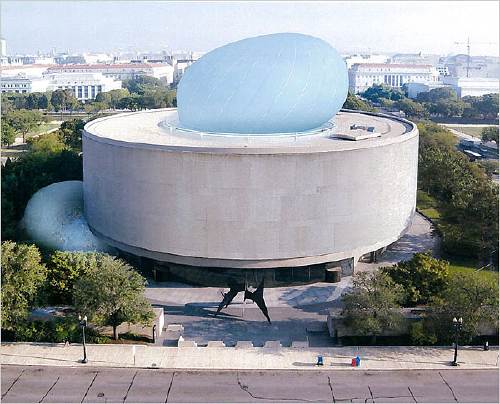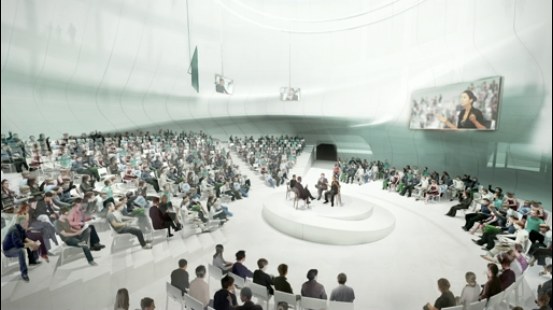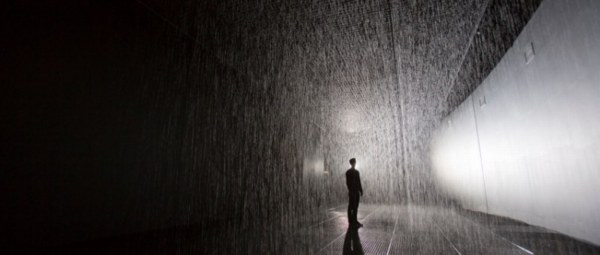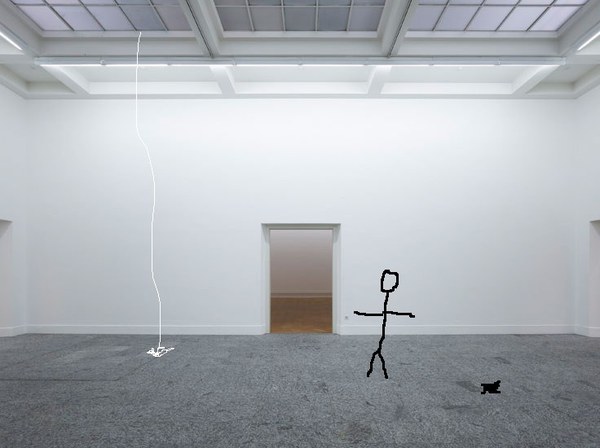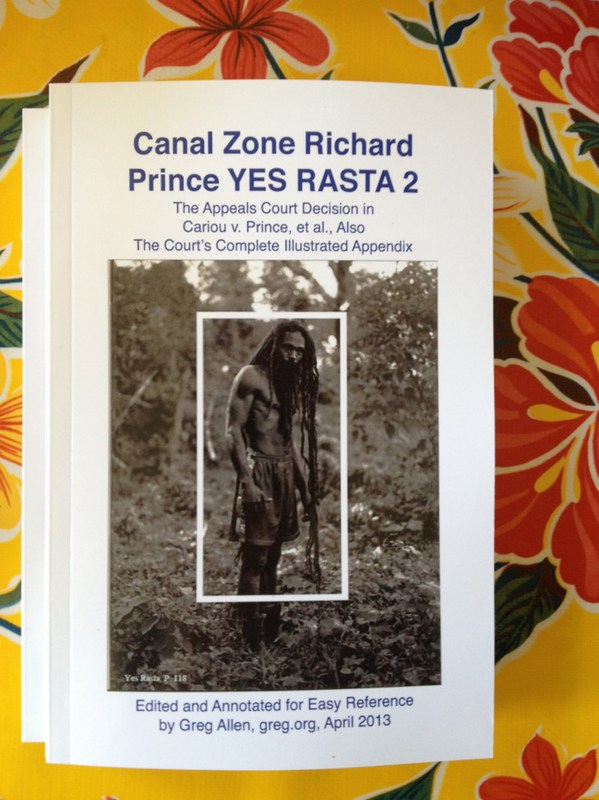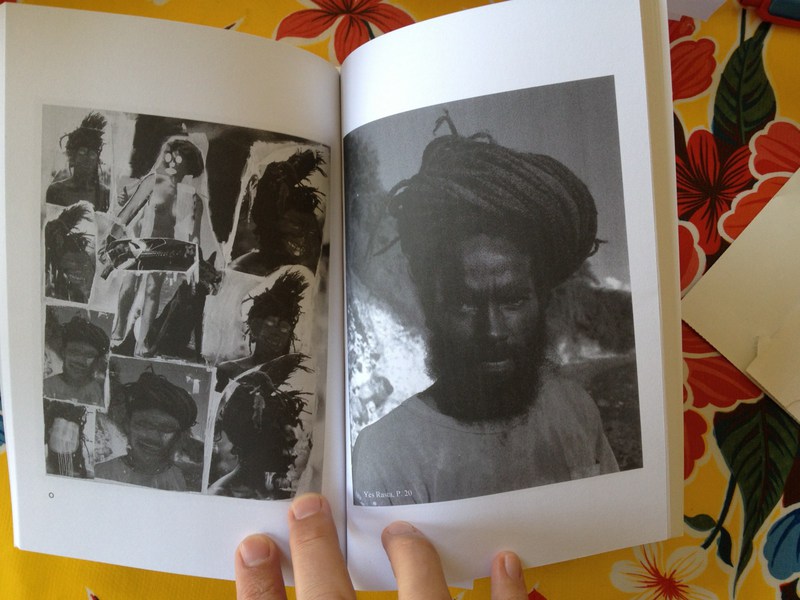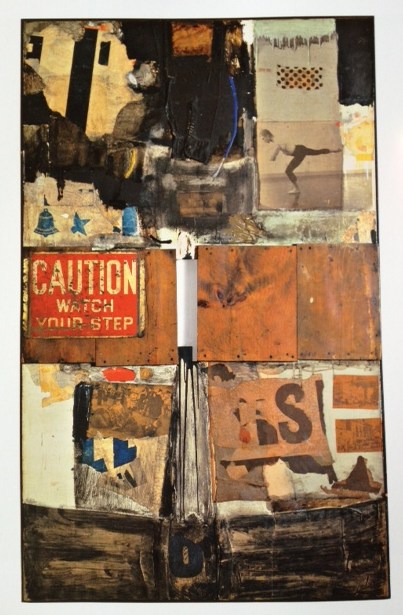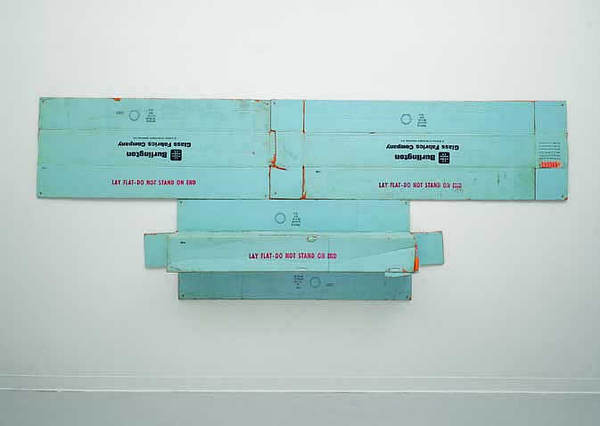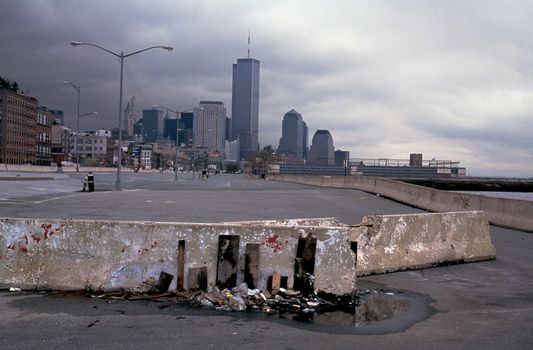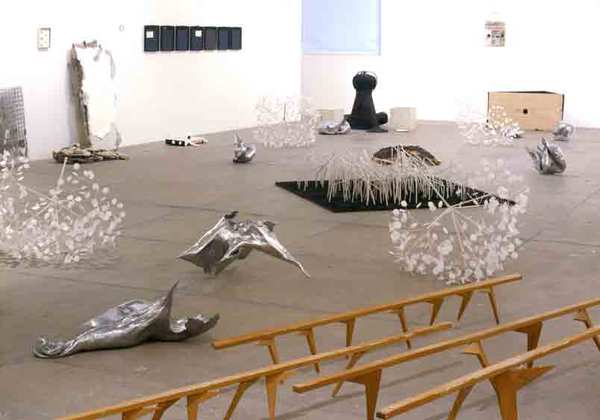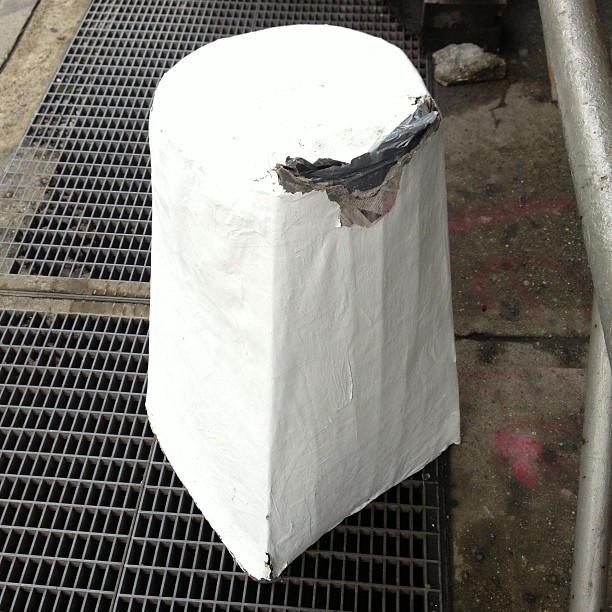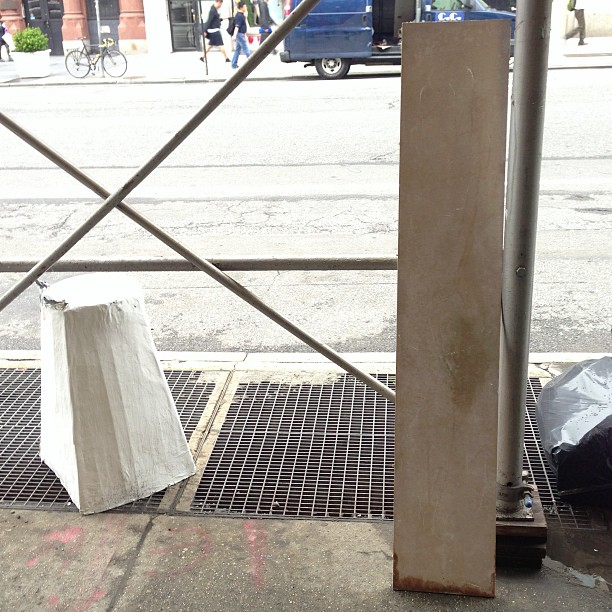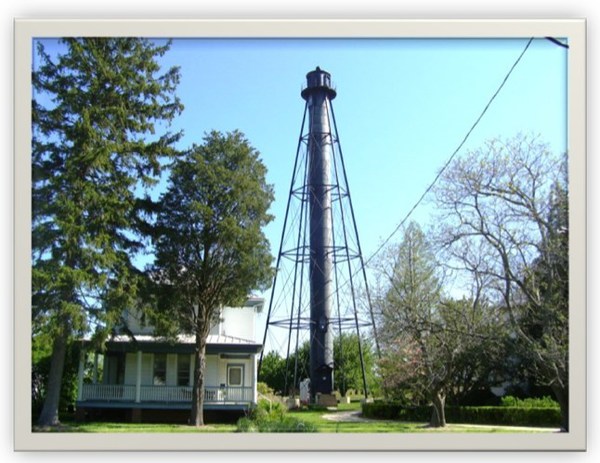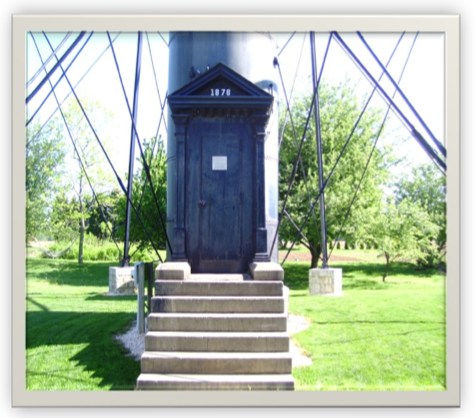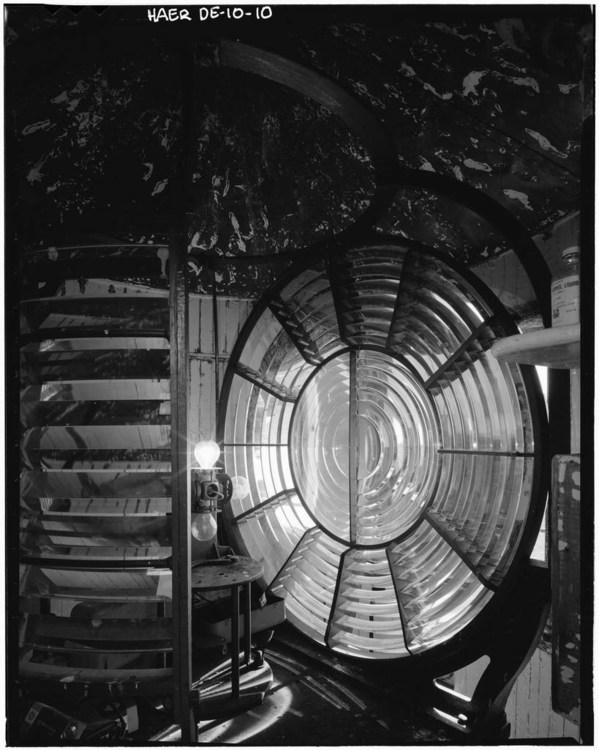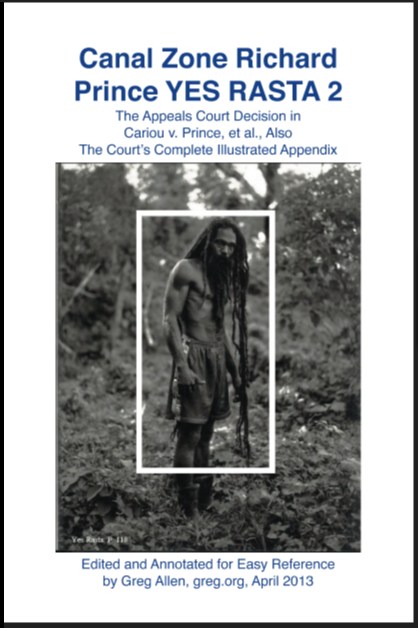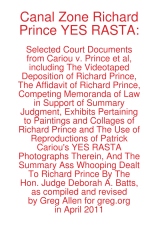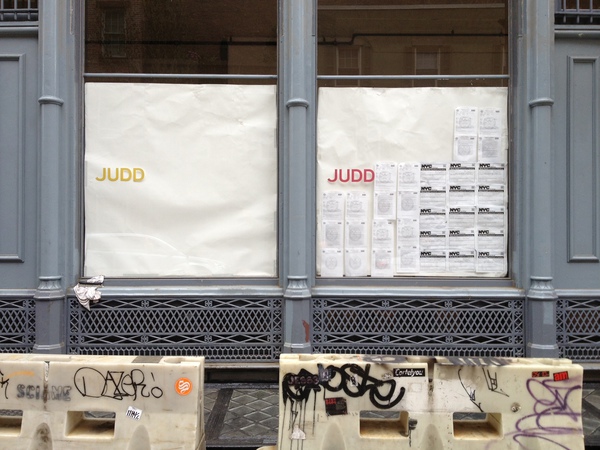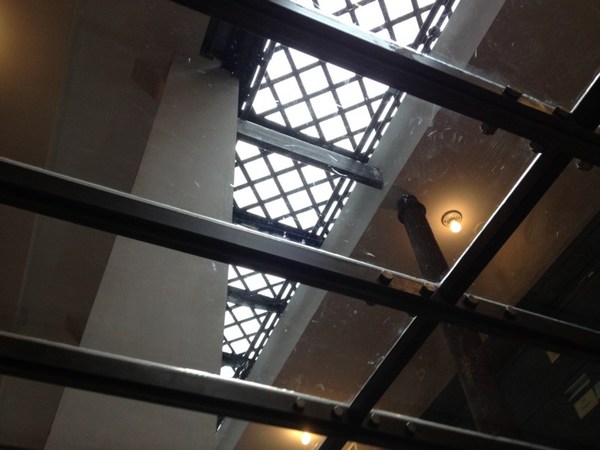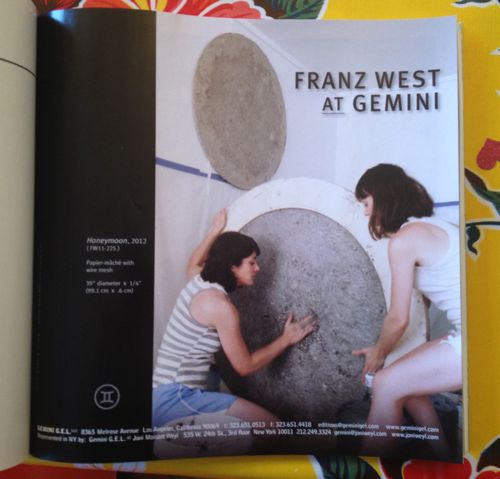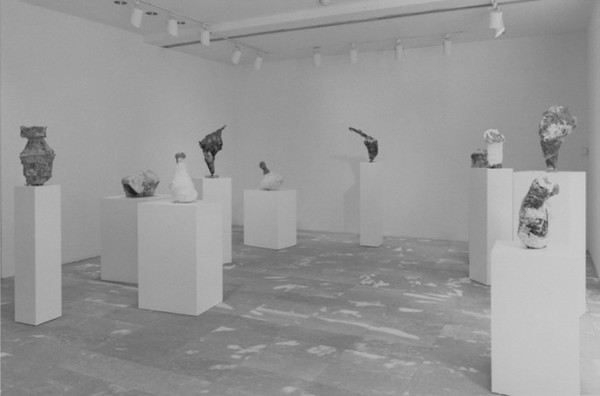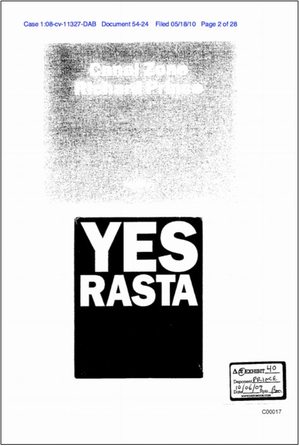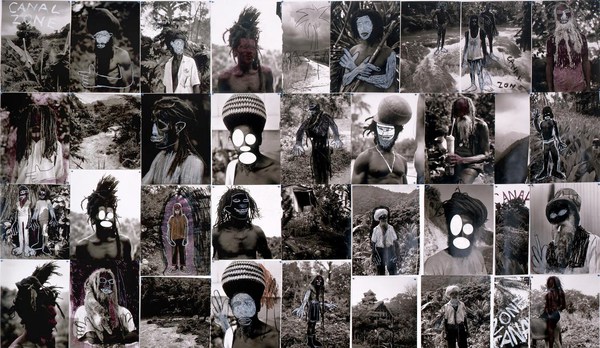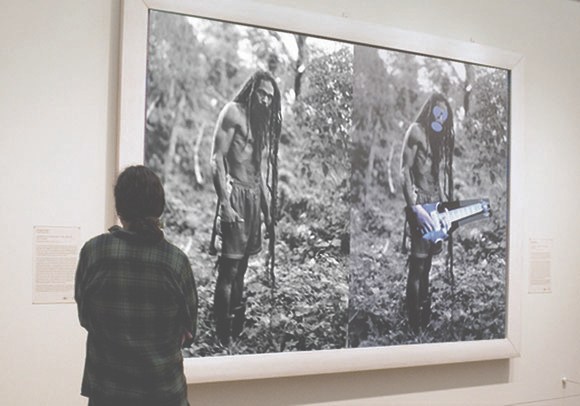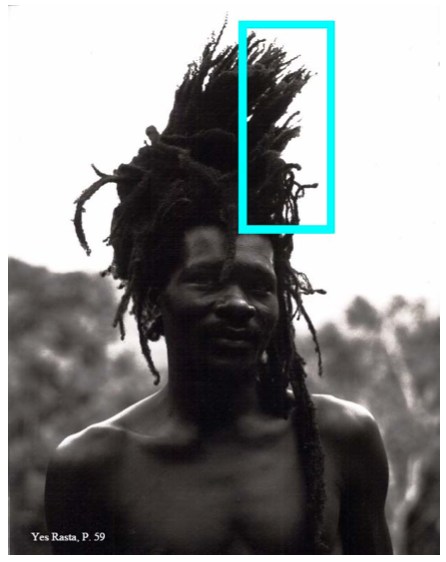DAY AFTER UPDATE: Whoa, well, then. The Hirshhorn board split and Koshalek announced his resignation by year-end. What a way to go.
While designer Liz Diller made her politico-architectural case for The Hirshhorn Bubble in her 2012 TED talk, the Museum’s own justification for the project has been unclear and uncompelling.
Explanations center on making the Hirshhorn “an agent for cultural diplomacy.” In February director Richard Koshalek told Kriston Capps, “This institution should be the leader in terms of setting arts and cultural dialogue. Cultural policy is set in Washington, D.C.” This is debatable enough, as both mission and content.
The programming that’s always discussed, though, a “Center for Creative Dialogue,” involves conferences and discussions created by the Council on Foreign Relations and outside staff, not the Hirshhorn itself, or even the Smithsonian. Critics of the Bubble vision like Tyler Green note this disconnect, and that the Museum doesn’t need a bubble to host such policy-flavored forums and events; they could do it right now, in the existing auditorium. And in fact, they did just that last Fall, where a capacity crowd watched TV journalist Judy Woodruff moderate a panel on “Art and Social Change” during to the Ai Weiwei exhibition.
No, The Bubble is a thing apart, apparently, from the programming that would inhabit it. Its absurdist form on this symbolic site, and the transgressive gesture towards Gordon Bunshaft’s concrete donut, are meant to be self-justifying. Capps calls it “a public art stunt,” and the Washington Post suggests it could “break DC from stagnation.” It’s starchitecture as spectacle and a catalyst for attention and, eventually, one hopes, the holy grail of Washington existence: relevance.
Meanwhile, it’s amazing that until Capps’ reconsideration of the project last winter in the City Paper, there was no mention of what would be, for lack of a better term, the business model: The Bubble would be a for-hire event space.
Koshalek swears the Inflatable will engage the Hirshhorn’s curators, too. When the Bubble is inflated, part of its programming will correspond with whatever’s lining the gallery walls of the museum. The rest of the timeshare will go to whichever universities, think tanks, and corporations rent it out–a money-making proposition for the Hirshhorn which could lead to exclusive uses not quite in keeping with Diller’s civic scheme. (And certainly not with the museum’s artistic mission.)
Continue reading “The Hirshhorn Is A Special Venue In Search Of Events”

